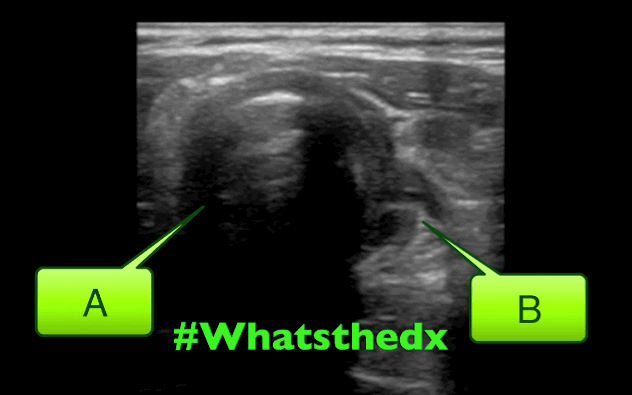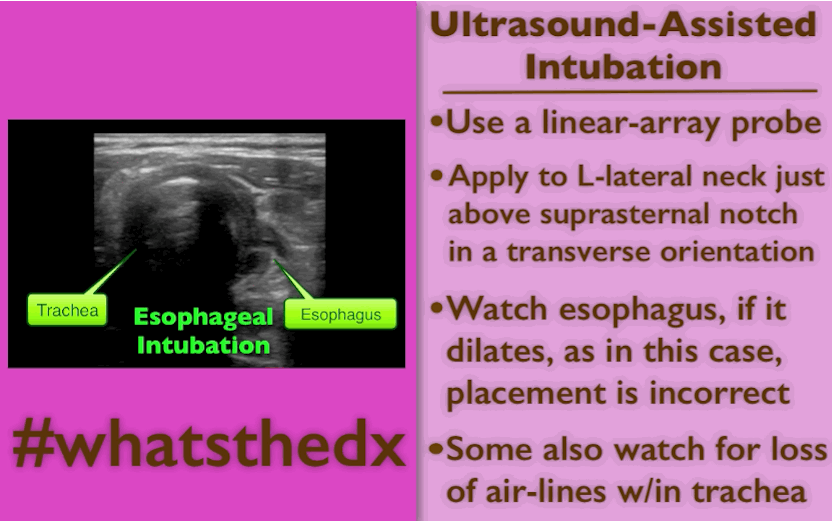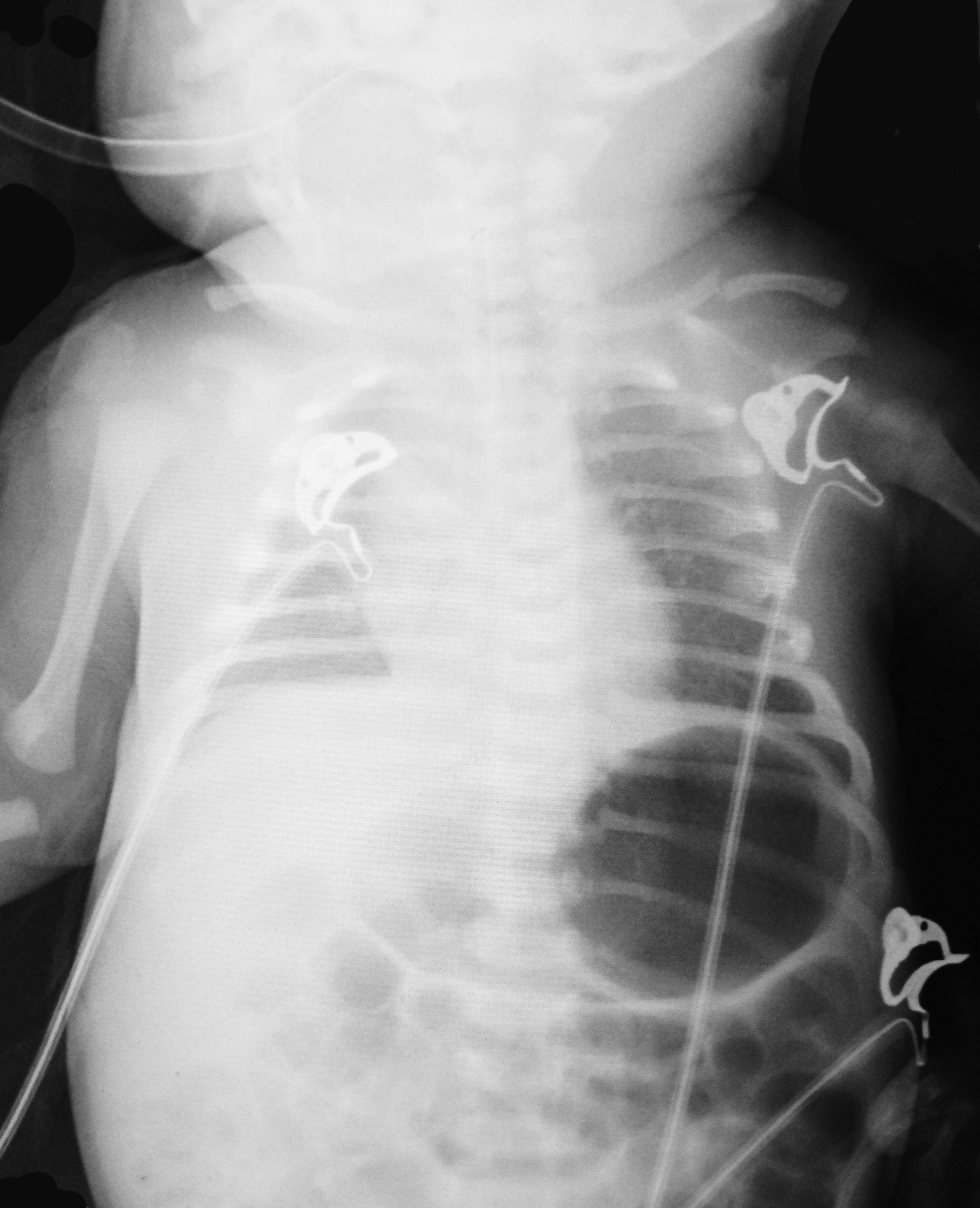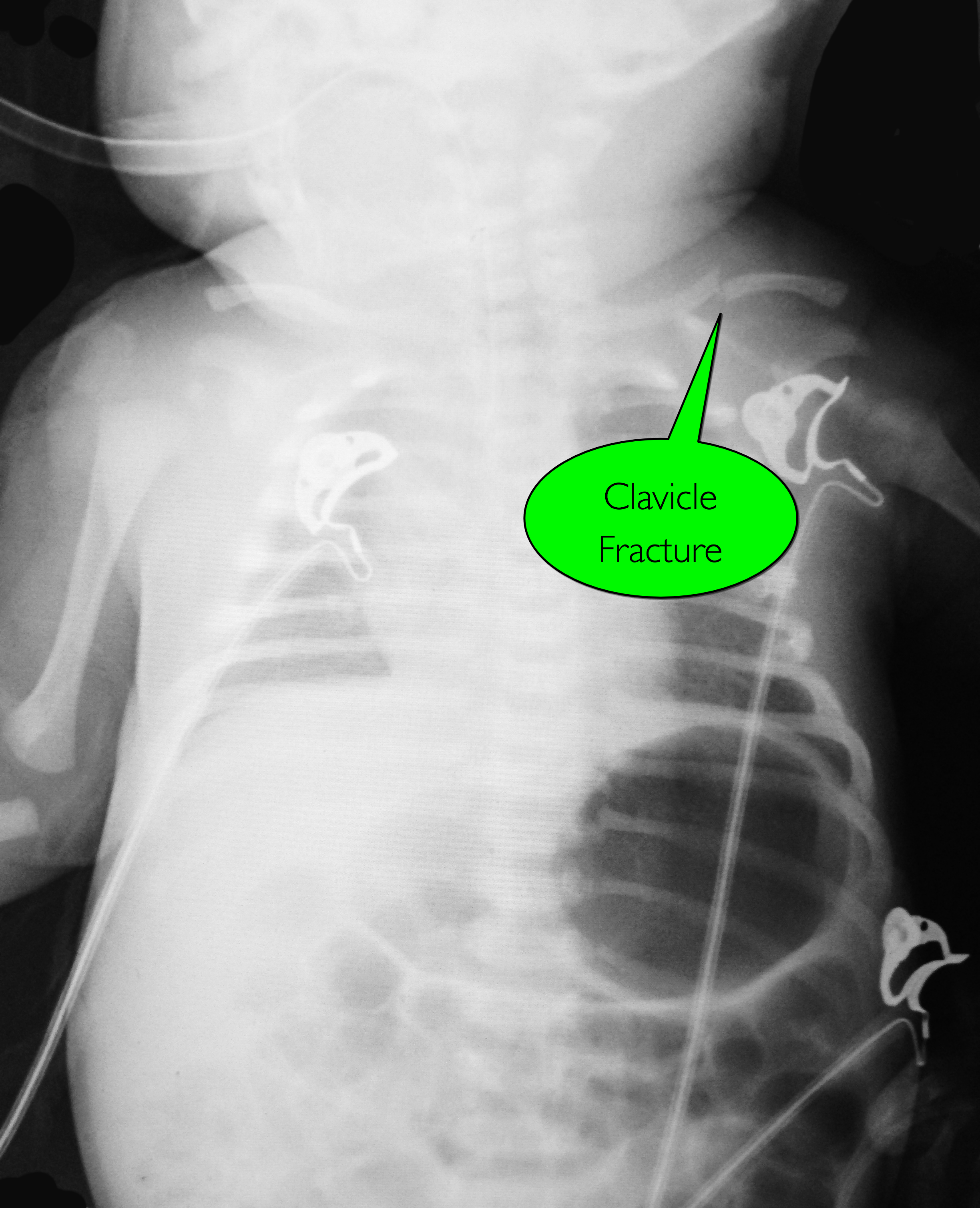Category: Neurology
Keywords: neurosurgery, trauma (PubMed Search)
Posted: 10/23/2014 by Danya Khoujah, MBBS
Click here to contact Danya Khoujah, MBBS
The 2013 neurosurgery guidelines mention two of the more controversial therapies used in spinal cord injuries:
- “MAP Push” (maintaining the patient’s MAP 85-90mmHg, which theoretically increases the blood flow to the penumbra): evidence for the particular MAP goal is not great, but studies show that ICU level monitoring for the first 7-14 days improves outcome as patients may have delayed cardiovascular or pulmonary instability
- Steroids are not recommended anymore (they were an “option” in the previous guidelines)
Neurosurgery. 2013 Mar;72. Updated Guidelines for the Management of Acute Cervical Spine and Spinal Cord Injury. Resnick DK
Category: Critical Care
Keywords: choosing wisely, icu, critical care (PubMed Search)
Posted: 10/21/2014 by Feras Khan, MD
(Updated: 12/5/2025)
Click here to contact Feras Khan, MD
Choosing Wisely in the ICU
The Critical Care Societies Collaborative came up with this list for ICU providers
1. Don’t order diagnostic tests at regular intervals (such as every day) but rather in response to specific clinical questions. Do you really need a daily INR check or CBC check in all ICU patients? Really?
2. Don’t transfuse red blood cells in hemodynamically stable, non-bleeding ICU patients with a hemoglobin concentration greater than 7 g/dl. See last week’s Pearl!
3. Don’t use parental nutrition in adequately nourished critically ill patients within the first seven days of an ICU stay. TPN is the Cinnamon Toast Crunch of fungi.
4. Don’t deeply sedate mechanically ventilated patients without a specific indication and without daily attempts to lighten sedation. Use as little as possible when you can.
5. Don’t continue life support for patients at high risk for death or severely impaired functional recovery without offering patients and their families the alternative of care focused entirely on comfort. Engage families early in the hospital stay regarding aggressive life-sustaining treatments. Get palliative care involved in the ED!
Crit Care Med. 2014 Nov;42(11):2437-8. doi: 10.1097/CCM.0000000000000696.
Angus DC1, Deutschman CS, Hall JB, Wilson KC, Munro CL, Hill NS.
Category: Visual Diagnosis
Posted: 10/20/2014 by Haney Mallemat, MD
(Updated: 11/4/2014)
Click here to contact Haney Mallemat, MD
13 year-old right-hand dominant following assault with blunt object. What’s the diagnosis?

Monteggia Fracture
Follow me on Twitter (@criticalcarenow) or Google+ (+criticalcarenow)
Category: Cardiology
Posted: 10/19/2014 by Semhar Tewelde, MD
Click here to contact Semhar Tewelde, MD
Cardiovascular Morbidity & Sleep Apnea
Obstructive sleep apnea (OSA) is characterized by sleep-related periodic breathing, upper-airway obstruction, sleep disruption, and hemodynamic perturbations
Epidemiological data shows a strong association between untreated OSA & cardiovascular morbidity/mortality
Two recent studies by Gottlieb et al. (1) & Chirinos et al. (2) elucidated two important explicit and complicit treatment considerations for OSA
(1) In moderate-to-severe obstructive sleep apnea, the use of CPAP alone during sleep may ameliorate systemic hypertension and cardiovascular risk, even in patients who do not have "subjective" sleepiness
(2) Weight loss combined with CPAP use may further decrease cardiovascular morbidity
Basner R. Cardiovascular Morbidity and Obstructive Sleep Apnea. N Engl J Med 2014; 370:2339-2341 June 12, 2014
Category: Orthopedics
Keywords: Segond, Reverse, Fracture (PubMed Search)
Posted: 10/19/2014 by Michael Bond, MD
Click here to contact Michael Bond, MD
The Reverse Segond Fracture
Most people have heard of a segond fracture (avulsion fracture of the lateral tibeal platuea) seen on knee xrays which is a marker for Anterior Cruciate Ligament and medial meniscus injuries. See Pearl https://umem.org/educational_pearls/1015/
However, there is also a Reverse Segond Fracture that is another benign appearing avulsion fracture of the medial tibeal plateau that is marker for significant injury to the Posterior Cruciate Ligament (PCL).
If a Segond or Reverse Segond Fracture is seen consider immobilzing the patients knee until they can follow up with Orthopedics and/or get an MRI to determine if additional injuries are present.
Category: Pediatrics
Keywords: Lactate (PubMed Search)
Posted: 10/17/2014 by Jenny Guyther, MD
(Updated: 12/5/2025)
Click here to contact Jenny Guyther, MD
The world of pediatrics is still working on catching up to adult literature in terms of lactate utilization and its implications. The study referenced looked at over 1000 children admitted to the pediatric intensive care unit. Lactate levels were collected 2 hours after admission and a mortality risk assessment was calculated within 24 hours of admission (PRISM III). Results showed that the lactate level on admission was significantly associated with mortality after adjustment for age, gender and PRISM III score.
Bottom line: In your critically ill pediatric patient, lactate may be a useful predictor of mortality.
Bai Z et al. Effectiveness of predicting in-hospital mortality in critically ill children by assessing blood lactate levels at admission. BMC Pediatrcs 2014; 14:83.
Category: International EM
Keywords: Infectious diseases, isolation, quarantine (PubMed Search)
Posted: 10/16/2014 by Jon Mark Hirshon, PhD, MPH, MD
Click here to contact Jon Mark Hirshon, PhD, MPH, MD
With all the current concern about Ebola, it is important to understand what are quarantine and isolation and who can order these.
Per the Centers for Disease Control:
Federal Law allows for quarantine and isolation:
State laws allows for the enforcement of isolation and quarantine within their borders.
Bottom Line:
Category: Toxicology
Keywords: valproic acid (PubMed Search)
Posted: 10/16/2014 by Hong Kim, MD
(Updated: 12/5/2025)
Click here to contact Hong Kim, MD
Valproic acid (VPA) is often used to treat seizure disorder and mania as a mood stabilizer. The mechanism of action involves enhancing GABA effect by preventing its degradation and slows the recovery from inactivation of neuronal Na+ channels (blockade effect).
VPA normally undergoes beta-oxidation (same as fatty acid metabolism) in the liver mitochondria, where VPA is transported into the mitochondria by carnitine shuttle pathway.
In setting of an overdose, carnitine is depleted and VPA undergoes omega-oxidation in the cytosol, resulting in a toxic metabolite.
Elevation NH3 occurs as the toxic metabolite inhibits the carbomyl phosphate synthase I, preventing the incorporation of NH3 into the urea cycle.
Signs and symptoms of acute toxicity include:
Laboratory abnormalities
Treatment: L-carnitine
Goldfrank's Toxicologic Emergencies 9th ed. P 705
Category: Critical Care
Posted: 10/14/2014 by Mike Winters, MBA, MD
(Updated: 12/5/2025)
Click here to contact Mike Winters, MBA, MD
Hemoglobin Threshold in Septic Shock
Holst LB, et al. Lower versus higher hemoglobin threshold for transfusion in septic shock. NEJM 2014; [published online]
Category: Visual Diagnosis
Posted: 10/13/2014 by Haney Mallemat, MD
Click here to contact Haney Mallemat, MD
A neck ultrasound is performed during endotracheal intubation. What is labeled "A", what is labeled "B" and what's the diagnosis?

Answer:
A: Trachea
B: Esophagus
This is an esophageal intubation! Take out the tube and try again. Check out this podcast for more on the technique from my good friends at the ultrasound podcast
Here's a summary:

Follow me on Twitter (@criticalcarenow) or Google+ (+criticalcarenow)
Category: Cardiology
Posted: 10/12/2014 by Semhar Tewelde, MD
(Updated: 12/5/2025)
Click here to contact Semhar Tewelde, MD
Kounis Syndrome (Part II)
- KS can develop from multiple etiologies: hymenoptera, proteins, vasoactive amines, histamine, acetylcholine, multiple antibiotics, and various medical conditions (angioedema, serum sickness, asthma, stress-induced cardiomyopathy).
- Hypersensitivity myocarditis and KS are two cardiac entities of allergic etiology affecting the myocardium and coronary arteries, respectively. These two entities can mimic each other and can be clinical indistinguishable.
- Presence of eosinophil’s, atypical lymphocytes, and giant cells on myocardial biopsy suggests hypersensitivity myocarditis.
- There is evidence showing use of corticosteroids with vasospastic angina with evidence of allergy or the presence of symptoms refractory to high-dose vasodilators has been reported to resolve symptoms.
Kounis GN, Soufras GD, Kouni SA, et al. Hypersensitivity myocarditis and hypersensitivity coronary syndrome (Kounis syndrome). Am J Emerg Med 2009;27:506–508.
Vivas D, Rubira JC, Ortiz AF, et al. Coronary spasm and hypersensitivity to amoxicillin: Kounis or not Kounis syndrome? Int J Cardiol 2008;128:279–281.
Category: Airway Management
Keywords: Concussion, patient education (PubMed Search)
Posted: 10/11/2014 by Brian Corwell, MD
Click here to contact Brian Corwell, MD
There is no effective pharmacologic treatment known to hasten recovery from concussion. In future pearls we will examine possible interventions that may help.
The importance of educating our patients was demonstrated in two studies looking at concussion education. Patients were separated into 2 groups. The intervention group received a booklet of information discussing common symptoms of concussion, suggested coping strategies and the likely time course of recovery. At a 3 month follow-up evaluation, the intervention group reported fewer symptoms. This was repeated in pediatric patients with similar results.
Take Home: Consider taking the time to put such an information sheet together for concussed patients seen in the ED.
Ronsford J, et al. Impact of early intervention on outcome after mild traumatic head in adults. 2002
Category: Pediatrics
Posted: 10/10/2014 by Rose Chasm, MD
(Updated: 12/5/2025)
Click here to contact Rose Chasm, MD
Bennett NJ, et al. Pediatric Pneumonia Treatment and Management. Medscape. April 2014.
AAP. Management of Communty-Acquired Pneumonia in Infants and Children Older than 3 Months of Age. Pediatrics. Vol 128 No 6 December 1, 2011.
Category: Toxicology
Keywords: calcium channel blocker, poisoning (PubMed Search)
Posted: 10/6/2014 by Bryan Hayes, PharmD
(Updated: 10/11/2014)
Click here to contact Bryan Hayes, PharmD
In a precursor to a forthcoming international guideline on the management of calcium channel blocker poisoning, a new systematic review has been published assessing the available evidence.
A few findings from the systematic review:
Stay tuned for the international guideline coming out soon. One treatment recommendation from the new guideline, reported at the 8th European Congress on Emergency Medicine last month, is not to use glucagon.
St-Onge M, et al. Treatment for calcium channel blocker poisoning: a systematic review. Clin Toxicol 2014. [Epub ahead of print]. [free full-text PDF]
Follow me on Twitter (@PharmERToxGuy) or Google Plus (+bryanhayes13)
Category: Neurology
Keywords: Hydrocephalus, CSF shunt malfunction, ventriculomegaly, Evans' ratio (PubMed Search)
Posted: 10/8/2014 by WanTsu Wendy Chang, MD
Click here to contact WanTsu Wendy Chang, MD
Hydrocephalus is a disorder of cerebrospinal fluid (CSF) accumulation. Acute obstructive hydrocephalus such as in subarachnoid hemorrhage and CSF shunt malfunction can cause a rapid rise in intracranial pressure. Nonobstructive hydrocephalus is associated with subacute symptoms. Clinical features of acute obstructive hydrocephalus include headache, blurred vision, papilledema, ocular palsies, nausea and vomiting, and decreased level of consciousness.
Evaluation of hydrocephalus in the ED should include neuroimaging, typically noncontrast head CT given its wide availability. CT characteristics of hydrocephalus can be seen in Figure 1: ventriculomegaly with dilated 3rd ventricle, dilated 4th ventricle, and presence of temporal horns.
When evaluating patients with pre-existing hydrocephalus for worsening symptoms, such as in the evaluation of CSF shunt malfunctions, it is helpful to compare the head CT or MRI for interval ventricular enlargement. Two simple measurements can be taken on a CT or MRI for objective comparisons (Figure 2).
Evans' ratio = A/B = Maximum width of frontal horns (A) divided by maximum width of inner skull (B) at the same CT/MRI level
C = Width of 3rd ventricle
Use of acetazolamide to decrease CSF production is not effective in long-term treatment of hydrocephalus. About 75% of patients with hydrocephalus require CSF shunt placement.
Shprecher D, Schwalb J, Kurlan R. Normal pressure hydrocephalus: diagnosis and treatment. Curr Neurol Neurosci Rep. 2008;8(5):371-376.
Poca MA, Sahuquillo J. Short-term medical management of hydrocephalus. Expert Opin Pharmacother. 2005;6(9):1525-1538.
Anvekar B 2011, Neuroradiology Cases, viewed 8 October 2014,
Category: Misc
Keywords: app pearls apple google (PubMed Search)
Posted: 10/7/2014 by Kevin Hamilton
Click here to contact Kevin Hamilton
We are proud to announce the release of our new UMEM Pearls App, now available in the Apple App Store and the Google Play Marketplace! You will now be able to pull down pearl content for offline viewing, in addition to having all of the pearls in searchable format available on your mobile devices.
Click either of the following links on your mobile device to download your Pearls App today!
Category: Critical Care
Posted: 10/6/2014 by John Greenwood, MD
(Updated: 10/7/2014)
Click here to contact John Greenwood, MD
The ARISE Trial
Early, aggressive resuscitation and attention to detail are essential element of managing critically ill patients. This past week the ARISE trial was published - a 2nd large, randomized control study to examine the benefit of protocolized vs. usual care in patients with severe sepsis and septic shock.
What were the main findings? After enrolling 1,600 patients who presented to the ED in severe sepsis or septic shock:

Bottom Line: Resuscitation goals for the patient with septic shock should include:
Additional therapeutic goals should be made on a patient by patient basis. Reassess your patient frequently, pay attention to the details, and you will improve your patient’s mortality.
Suggested Reading
Follow Me on Twitter: @JohnGreenwoodMD
Category: Visual Diagnosis
Posted: 10/6/2014 by Haney Mallemat, MD
Click here to contact Haney Mallemat, MD
7d old child presents with difficulty feeding,vomiting one time, and now with intermittent apneic episodes. What's the diagnosis? (Careful....this one is tricky!)

Answer: Workup should include an ALTE and sepsis evaluation PLUS evaluation for non-accidental trauma
Non-accidental trauma (NAT)
NAT is most prevalent in children 0-3 months of age.
Classic metaphyseal lesions, rib fractures, and fractures in various stages of healing are most commonly described in children.
How do we know this is not just birth trauma from a shoulder dystocia, large for gestational age, or difficult vaginal delivery?
Subperiosteal new bone formation appears as a:
NAT Work-up:

Follow me on Twitter (@criticalcarenow) or Google+ (+criticalcarenow)
Category: Cardiology
Posted: 10/4/2014 by Semhar Tewelde, MD
Click here to contact Semhar Tewelde, MD
Kounis Syndrome (Part I)
- Kounis & Zavras (1991) described the syndrome of allergic angina and allergic myocardial infarction, currently known as Kounis syndrome (KS). Braunwald (1998) noted vasospastic angina can be induced by allergic reactions, with mediators such as histamine and leukotrienes acting on coronary vascular smooth muscle.
- Two subtypes have been described: type I, occurring in patients without predisposing factors for CAD often caused by coronary artery spasm and type II, occurring with angiographic evidence of coronary disease when the allergic events induce plaque erosion or rupture.
- This syndrome has been reported in association with a variety of medical conditions, environmental exposures, and medication exposures. Entities such as Takotsubo cardiomyopathy, drug-eluted stent thrombosis, and coronary allograft vasculopathy also appear to be associated with this syndrome.
- Clinical presentation includes: symptoms and signs of an allergic reaction and acute coronary syndrome: chest pain, dyspnea, faintness, nausea, vomiting, syncope, pruritus, urticaria, diaphoresis, pallor, palpitations, hypotension, and bradycardia.
Kounis GN, Kounis SA, Hahalis G, et al. Coronary artery spasm associated with eosinophilia: another manifestation of Kounis syndrome? Heart Lung Circ 2009;18:163–164.
Mytas DZ, Stougiannos PN, Zairis MN, et al. Acute anterior myocardial infarction after multiple bee stings. A case of Kounis syndrome. Int J Cardiol 2009;134:e129–e131.
Category: Pharmacology & Therapeutics
Keywords: beta-lactam, piperacillin/tazobactam, critically ill (PubMed Search)
Posted: 9/27/2014 by Bryan Hayes, PharmD
(Updated: 10/4/2014)
Click here to contact Bryan Hayes, PharmD
Beta-lactam antimicrobials (penicillins, cephalosporins, and carbapenems) are frequently used for empiric and targeted therapy in critically ill patients. They display time-dependent killing, meaning the time the antibiotic concentration is above the minimin inhibitory concentration (MIC) is associated with improved efficacy.
Two new pharmacodynamic/pharmacokinetic studies suggest that current beta-lactam antimicrobial dosing regimens may be inadequate.
Antimicrobial dosing in critically ill patients is complex. Current dosing of beta-lactams may be inadequate and needs to be studied further with relation to clinical outcomes.
Follow me on Twitter (@PharmERToxGuy) or Google Plus (+bryanhayes13)
